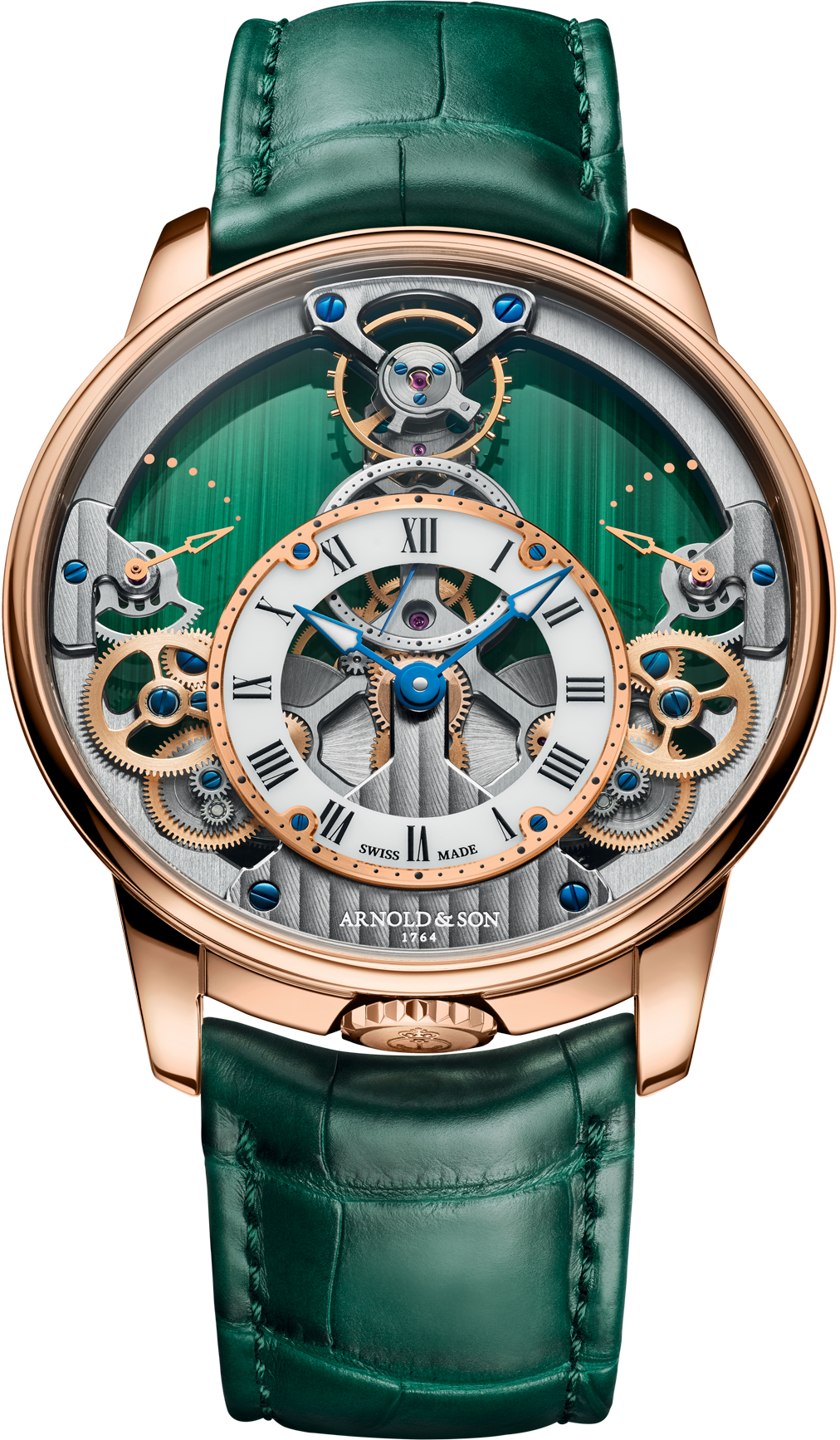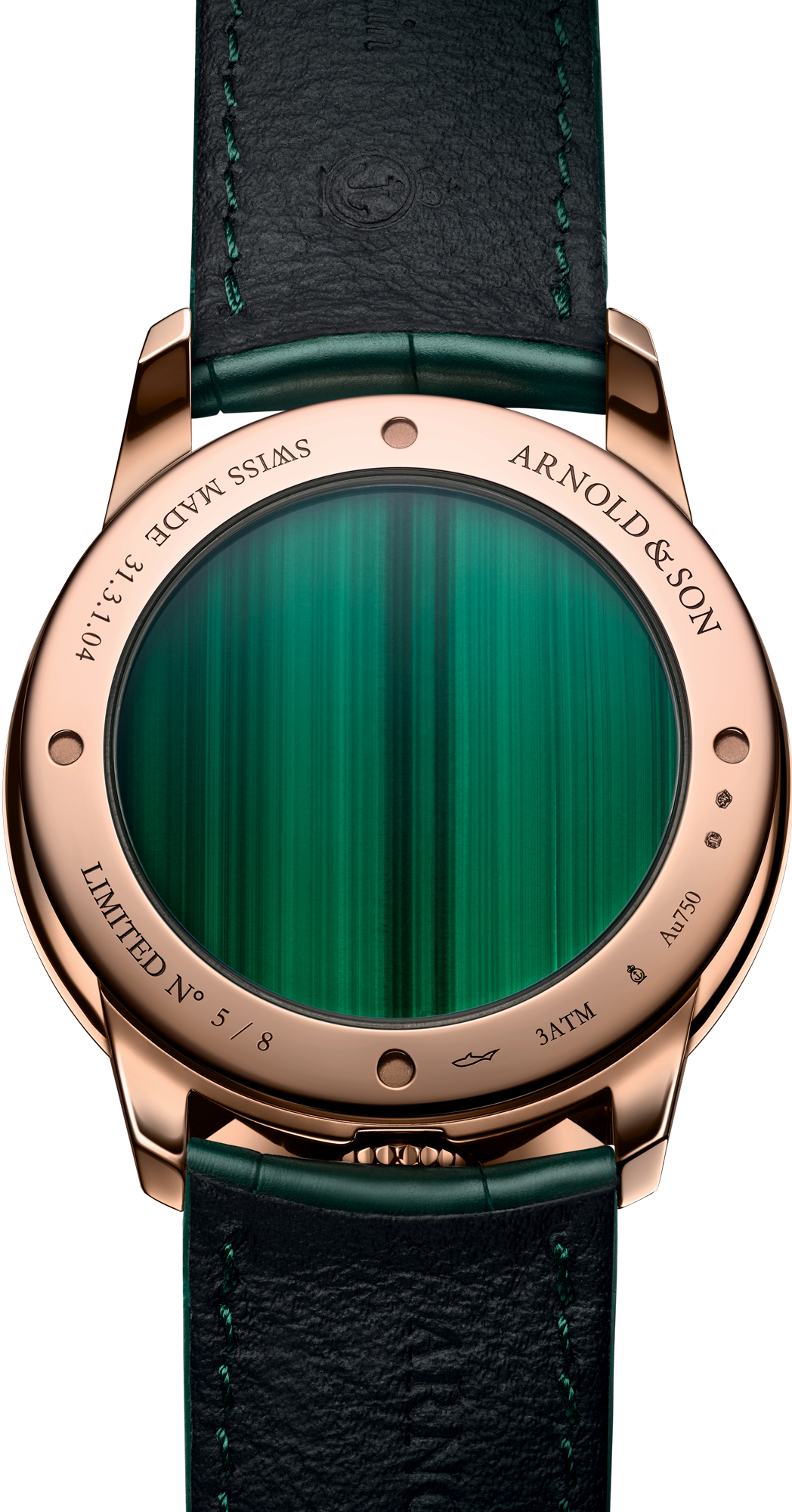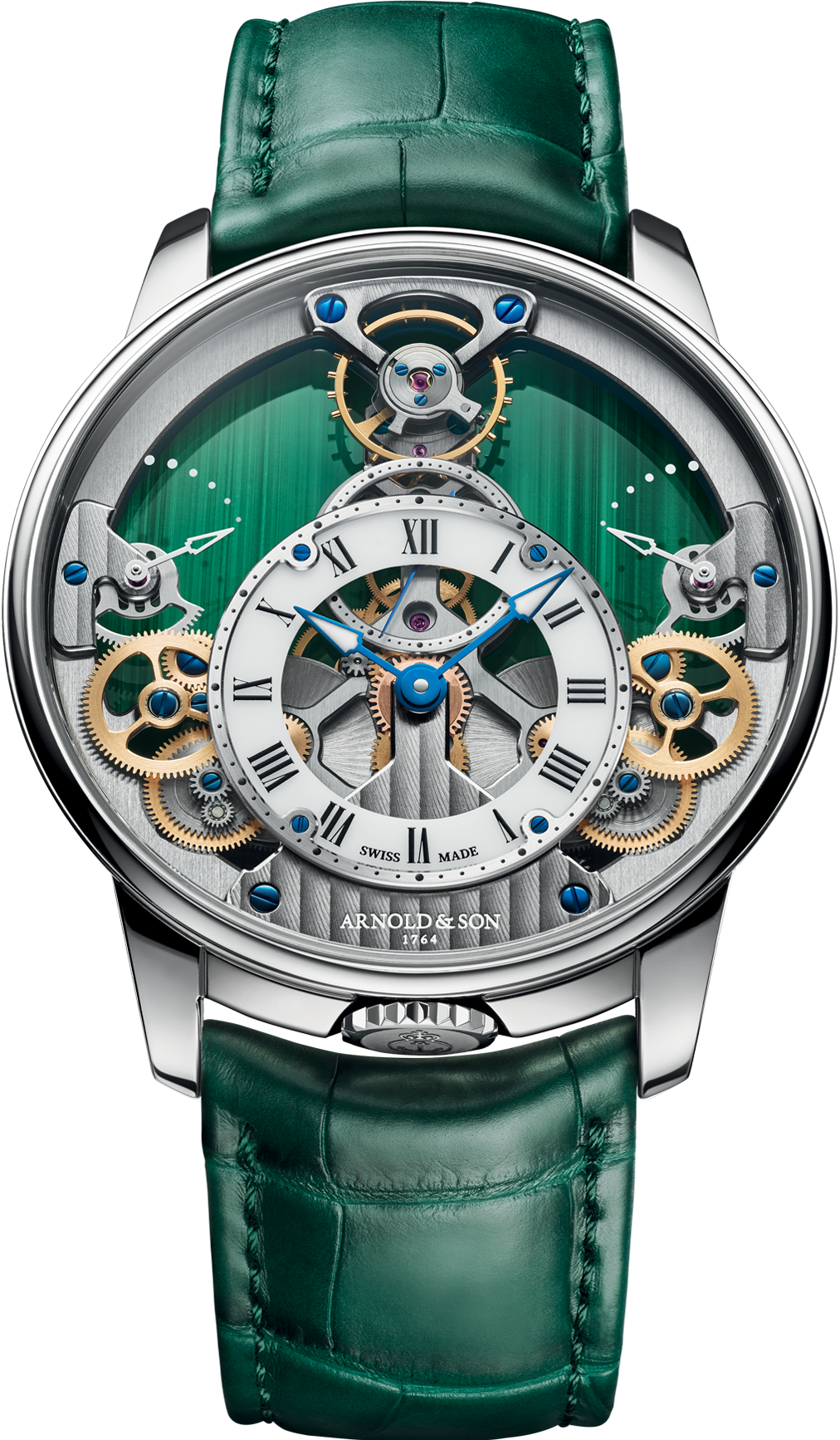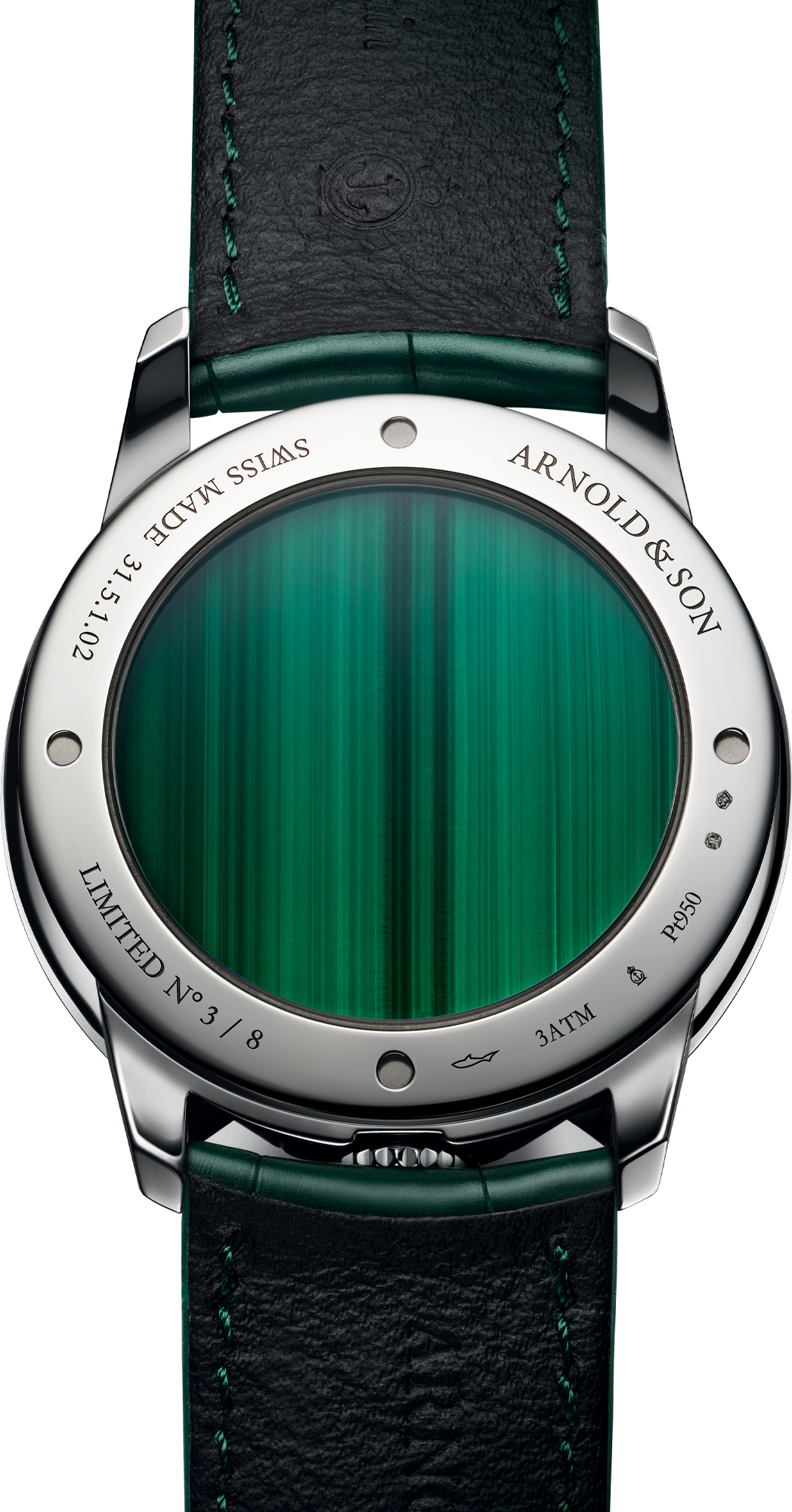
Vertical time
Our conception of time is often either linear or cyclical. A vertical alignment is not part of our mental landscape. And yet, it is this vision that Arnold & Son has chosen to portray on Time Pyramid. Inspired by the creations of John Arnold and his British peers, it revives a clock shape that was fashionable in the 1830s. By arranging the movement’s organs from top to bottom instead of in a circle, Arnold & Son goes beyond the chronometric horizon to achieve an unparalleled feat of design.
Technical Specifications
Functions
Movement
- Calibre:
- A&S1615 (view calibre)
- Jewels:
- 27
- Diameter:
- 37.60 mm
- Thickness:
- 4.40 mm
- Power reserve:
- 90 hours
- Frequency:
- 3 Hz / 21,600 vph
Dial
Case
- Material:
- platinum (Pt950)
- Diameter:
- 42.5 mm
- Thickness:
- 10.72 mm
- Crystal:
- domed sapphire, with an anti-reflective coating on both sides
- Back:
- blue aventurine glass lined with a sapphire crystal, anti-reflective coating
- Water resistance:
- 3 bar (30 metres/100 feet)
Strap
- Material:
- blue alligator leather, black calfskin lining, hand-stitched
- Buckle:
- pin buckle, platinum (Pt 950)
Interested in this watch?

Design
In creating Time Pyramid, Arnold & Son has revisited, adapted and extended clockmaking codes. Devoid of a full-sized dial, this wristwatch reveals a skeletonised movement in the shape of a pyramid. Alternatively, it can be seen as taking the form of an anchor, recalling the Arnold & Son logo and making direct reference to John Arnold’s title as watchmaker for the Royal Navy.
In the new case, with a diameter of 42.5 mm, a thickness of 10.72 mm, and in a choice of either red gold (5N) or platinum (PT950), the distinct features of Time Pyramid’s movement stand out. Its crown at 6 o’clock remains unique in the world of watchmaking, as does its baroque approach to symmetry.

Case back
The expression ‘open-air’ applies literally here, as the glass used for the case-back offers yet another new interpretation by Arnold & Son. Neither transparent nor opaque, it is composed of an extremely thin disc of aventurine glass in what constitutes a first for this iconic material.
Constellated with copper inclusions, aventurine glass originated in the region of Venice, which is renowned for its glass-making culture. It is said to have been discovered by accident when a workman dropped some copper filings into a vat of molten glass. One cooled and cut, the dazzling ‘all’avventura’ glass revealed a myriad of sparkles.

Light
Arnold & Son has chosen to use this decorated glass as a backdrop for its Time Pyramid. This backdrop allows the light to filter through when the watch is not being worn, revealing interplays of transparency and colour.
The interaction of reflections is just as strong on the dial, where alternating gold-plated and NAC-treated (anthracite) finishes showcase the Côtes de Genève stripes. The subtle glimpse it offers of the two barrels’ bridges reinforces the powerful and omnipresent sense of symmetry that underpins Time Pyramid.

Structure
The movement driving Time Pyramid is displayed for all to see. The case’s wide opening and slender bezel showcase the movement’s mechanical arrangement, while the screw balance sits majestically at 12 o’clock. Below, the gear train highlights an array of finishes that include hand chamfering, satin-finished and sunray-brushed wheels, snailed barrels and blued screws. The calibre’s structure then splits in two beneath a ring in white opal – the signature stone of Arnold & Son’s off-centred dials.
On either side of the encircled dial, two power-reserve indicators mirror one other, indicating the same information and reflecting the two barrels that power the calibre A&S1615 just a few millimetres below the surface. Fully developed, machined, assembled and adjusted at the Manufacture, it can operate for 90 hours without rewinding.




















